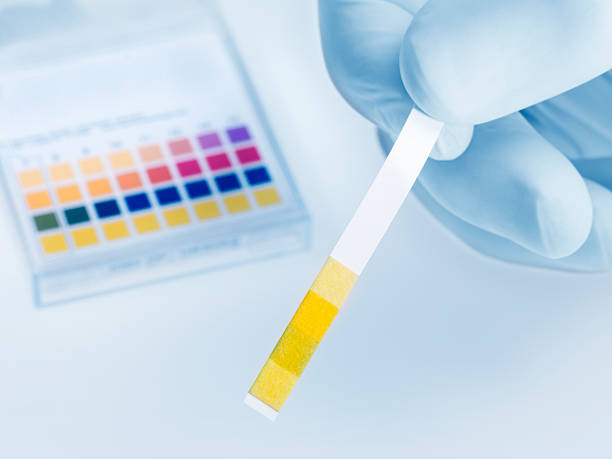In the realm of pool maintenance, the science of salt chlorination has revolutionized the way chlorine is produced and used. This innovative process allows pool owners to generate chlorine on-demand, providing a continuous supply of this essential chemical for pool sanitation. Let’s delve into the fascinating world of salt chlorination and explore how it works.

Understanding Salt Chlorination
Salt chlorination is a method of water treatment that uses dissolved salt to produce chlorine gas, which in turn sanitizes the pool water. This process takes place in a salt chlorinator, a device installed in the pool’s circulation system. The chlorinator consists of a cell that contains electrically charged metal plates, typically made of titanium.

How It Works
When salt is dissolved in the pool water, it forms sodium hypochlorite (NaClO), which is the active ingredient in chlorine. The saltwater passes through the chlorinator cell, where an electric current is applied to the metal plates. This electric current triggers electrolysis, causing the NaClO molecules to break down into chlorine gas (Cl2), which dissolves into the water, sanitizing it.

Advantages of Salt Chlorination
One of the primary advantages of salt chlorination is the continuous production of chlorine. Unlike traditional chlorine sanitation methods, which require the periodic addition of chlorine tablets or liquid, salt chlorination produces chlorine on-demand, ensuring a steady supply of sanitizer in the water.
Additionally, salt chlorination is more cost-effective in the long run. While the initial installation cost of a salt chlorinator may be higher than traditional chlorine systems, the ongoing expense of purchasing chlorine tablets or liquid is eliminated, saving money over time.

Environmental Benefits
Salt chlorination also offers environmental benefits. Since it produces chlorine on-site, there is no need to transport or store chlorine chemicals, reducing the risk of spills or accidents. Furthermore, the process generates less waste, as there are no empty chlorine containers to dispose of regularly.

Maintenance and Care
To maintain optimal performance, it is essential to monitor the salt levels in the pool regularly. The ideal salt concentration for salt chlorination is typically between 2,500 and 4,000 parts per million (ppm). Additionally, the chlorinator cell should be inspected periodically for any buildup of calcium or other minerals, which can impede its efficiency.

Conclusion
The science of salt chlorination has revolutionized the way pool owners maintain their pools, providing a safer, more cost-effective, and environmentally friendly alternative to traditional chlorine sanitation methods. By producing chlorine on-demand, salt chlorination ensures a continuous supply of sanitizer, keeping pool water clean and safe for swimmers to enjoy.

References
- “Salt Water Pool and Spa Chlorination” by Robert W. Lowry, American Water Works Association, 2007.
- “Salt Chlorination for Swimming Pools: A Technical Brief” by Water Quality and Health Council, 2014.
- “Chlorine Production by Electrolysis” by T. S. Rao, Journal of Chemical Education, 2002.

Your article helped me a lot, is there any more related content? Thanks!
Can you be more specific about the content of your article? After reading it, I still have some doubts. Hope you can help me.
Your article helped me a lot, is there any more related content? Thanks!
I don’t think the title of your article matches the content lol. Just kidding, mainly because I had some doubts after reading the article.
Your article helped me a lot, is there any more related content? Thanks!
Your article helped me a lot, is there any more related content? Thanks!
Thanks for sharing. I read many of your blog posts, cool, your blog is very good.
Thank you for your sharing. I am worried that I lack creative ideas. It is your article that makes me full of hope. Thank you. But, I have a question, can you help me? https://www.binance.com/es/register?ref=T7KCZASX
Your point of view caught my eye and was very interesting. Thanks. I have a question for you.
Thanks for sharing. I read many of your blog posts, cool, your blog is very good. https://www.binance.com/cs/join?ref=S5H7X3LP
Your point of view caught my eye and was very interesting. Thanks. I have a question for you. binance us registrácia
Thanks for sharing. I read many of your blog posts, cool, your blog is very good. código de indicac~ao da binance
Can you be more specific about the content of your article? After reading it, I still have some doubts. Hope you can help me.
Your article helped me a lot, is there any more related content? Thanks!
**mind vault**
mind vault is a premium cognitive support formula created for adults 45+. It’s thoughtfully designed to help maintain clear thinking
**mindvault**
mindvault is a premium cognitive support formula created for adults 45+. It’s thoughtfully designed to help maintain clear thinking
Thank you for your sharing. I am worried that I lack creative ideas. It is your article that makes me full of hope. Thank you. But, I have a question, can you help me?
**sugarmute**
sugarmute is a science-guided nutritional supplement created to help maintain balanced blood sugar while supporting steady energy and mental clarity.
**glpro**
glpro is a natural dietary supplement designed to promote balanced blood sugar levels and curb sugar cravings.
**prostadine**
prostadine is a next-generation prostate support formula designed to help maintain, restore, and enhance optimal male prostate performance.
**prodentim**
prodentim an advanced probiotic formulation designed to support exceptional oral hygiene while fortifying teeth and gums.
**nitric boost**
nitric boost is a dietary formula crafted to enhance vitality and promote overall well-being.
**glucore**
glucore is a nutritional supplement that is given to patients daily to assist in maintaining healthy blood sugar and metabolic rates.
**vitta burn**
vitta burn is a liquid dietary supplement formulated to support healthy weight reduction by increasing metabolic rate, reducing hunger, and promoting fat loss.
**synaptigen**
synaptigen is a next-generation brain support supplement that blends natural nootropics, adaptogens
**mitolyn**
mitolyn a nature-inspired supplement crafted to elevate metabolic activity and support sustainable weight management.
**zencortex**
zencortex contains only the natural ingredients that are effective in supporting incredible hearing naturally.
**yu sleep**
yusleep is a gentle, nano-enhanced nightly blend designed to help you drift off quickly, stay asleep longer, and wake feeling clear.
**wildgut**
wildgutis a precision-crafted nutritional blend designed to nurture your dog’s digestive tract.
**breathe**
breathe is a plant-powered tincture crafted to promote lung performance and enhance your breathing quality.
**energeia**
energeia is the first and only recipe that targets the root cause of stubborn belly fat and Deadly visceral fat.
**pinealxt**
pinealxt is a revolutionary supplement that promotes proper pineal gland function and energy levels to support healthy body function.
**boostaro**
boostaro is a specially crafted dietary supplement for men who want to elevate their overall health and vitality.
**prostabliss**
prostabliss is a carefully developed dietary formula aimed at nurturing prostate vitality and improving urinary comfort.
**potentstream**
potentstream is engineered to promote prostate well-being by counteracting the residue that can build up from hard-water minerals within the urinary tract.
**hepato burn**
hepato burn is a premium nutritional formula designed to enhance liver function, boost metabolism, and support natural fat breakdown.
**hepato burn**
hepato burn is a potent, plant-based formula created to promote optimal liver performance and naturally stimulate fat-burning mechanisms.
**flowforce max**
flowforce max delivers a forward-thinking, plant-focused way to support prostate health—while also helping maintain everyday energy, libido, and overall vitality.
**prodentim**
prodentim is a forward-thinking oral wellness blend crafted to nurture and maintain a balanced mouth microbiome.
**cellufend**
cellufend is a natural supplement developed to support balanced blood sugar levels through a blend of botanical extracts and essential nutrients.
**revitag**
revitag is a daily skin-support formula created to promote a healthy complexion and visibly diminish the appearance of skin tags.
**neurogenica**
neurogenica is a dietary supplement formulated to support nerve health and ease discomfort associated with neuropathy.
**sleeplean**
sleeplean is a US-trusted, naturally focused nighttime support formula that helps your body burn fat while you rest.